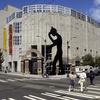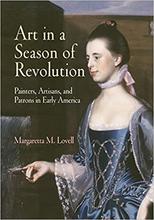More about Dr. Silvester Gardener
- All
- Info
- Shop

Contributor
Colonial surgeon “Dr. Silvester Gardiner” was the Ben Carson of the 1700s, except instead of gaining his recognition by successfully separating conjoined twins, he did so by mastering gallstone removal.
Gardiner then went on to make a fortune opening up pharmacies and teaching classes. As a wealthy colonial, he stayed privy to the trends and got his portrait done by John Singleton Copley.
Copley was a self-taught painter from a non-wealthy background, who became renowned for his life-like portraits of influential colonial figures like Paul Revere and Samuel Adams. It’s thanks to Copley that we can glimpse realistic depictions of so many famous colonials. In this portrait specifically, Copley shows Gardiner wearing a less formal, modern-for-the-time suit. The regal pose he puts on is straight out of the Brook’s Brothers’ How To Be A Gentleman. Colonial etiquette encouraged men to rest their arms such that their shirt frills would be exposed. Knowing this, we can see that Gardiner rests his arm on the table not only as an enticing pose, but also to show off his elegant shirt frills (a symbol of his class).
Copley’s portrait of Gardiner was done in 1772, but Gardiner and Copley likely became friends much sooner, in 1756, when Copley painted Gardiner’s daughter. While the portrait of Gardiner’s daughter may have kindled the flame for their friendship, I would not recommend following in Gardiner’s footsteps. Times have changed and posting online ads for an artist to paint your daughter is not a good idea.
Their relationship was a seemingly pleasant one up until Gardiner sold Copley a large property in Beacon Hill that Copley could not afford. It’s been speculated that the portrait of Gardiner served as a partial payment for the property as well as a “sorry I can’t afford the house you sold me” portrait. Gardiner tried in vain to collect the debt from Copley up until he died in 1796. If only the two of them had known the painting would sell in 2006 as a part of a lofty $3.4 million deal with the Seattle Art Museum.
Sources
- Dorner, Zachary. ""No one here knows half so much of this matter as yourself": The Deployment of Expertise in Silvester Gardiner's Surgical, Druggist, and Land Speculation Networks, 1734–83." The William and Mary Quarterly. May 07, 2015. Accessed Septembe
- Folk Art Portraiture of Early American Surgeons Ira M. Rutkow, MD, MPH, DRPh - http://jamanetwork.com/journals/jamasurgery/article-abstract/390325
- Seattle Art Museum, “Dr. Silvester Gardiner.” The Seattle Art Museum. Accessed September, 2017. https://goo.gl/sXf4U4
- Staff, Seattle Times. "SAM acquires Copley painting; artists awarded USA Fellowships." The Seattle Times. December 05, 2006. Accessed September 01, 2017. http://www.seattletimes.com/entertainment/sam-acquires-copley-painting-…












